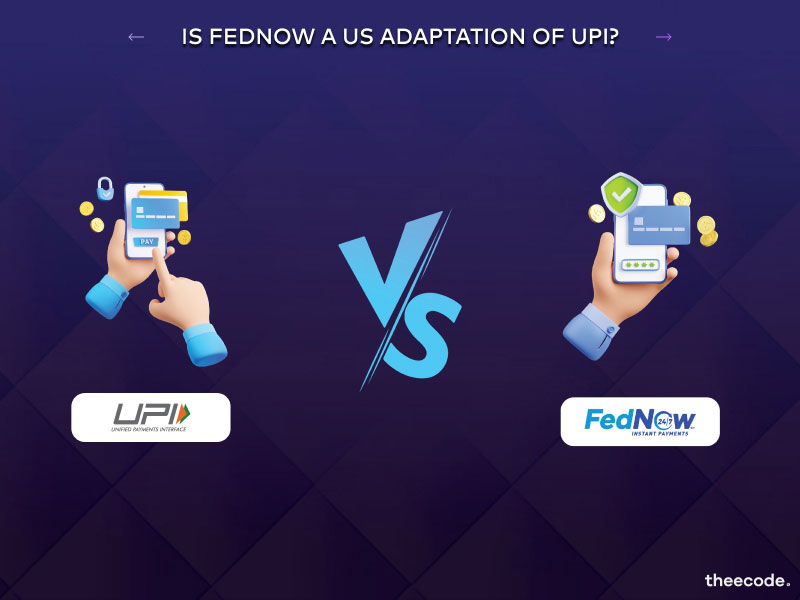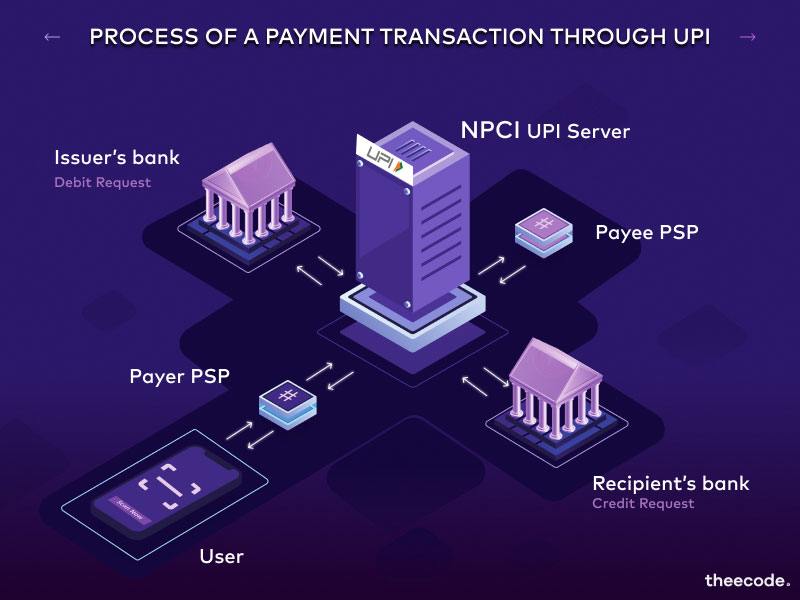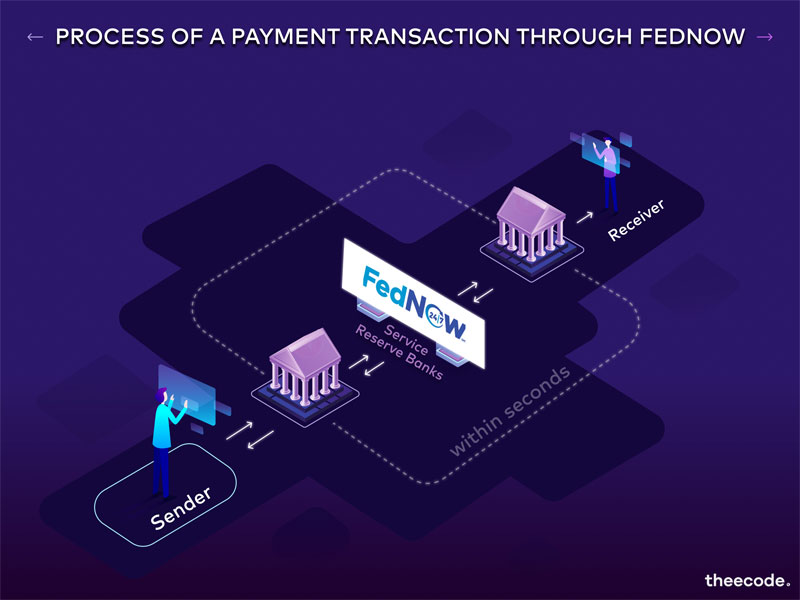Is FedNow a US Adaptation of UPI? Know the Difference
In recent years, digital payment adoption has become a global phenomenon,
prompting countries and states to strive for efficiency, speed, and
security. India's introduction of UPI in 2016 amazed many countries with its
effective technology, processing 2 billion transactions within four years.
Leveraging its experience in the Indian digital payments sector, Google has
made recommendations to the Federal Reserve, including real-time support for
low and high-value payments, standardized messaging protocols with extended
metadata, and the establishment of clear guidelines for an Application
Programming Interface (API) layer to allow third parties without financial
institution licenses to access and submit requests into the payment system.
Although the US financial market values privacy and security, it is taking a
step forward by launching FedNow in May/June 2023, a new payment system by the
Federal Reserve that enables instant payments and transfers 24/7. FedNow offers
a faster, more convenient, and accessible way for individuals and businesses to
make transactions.
Is FedNow a version of UPI in US?
-
UPI (Unified Payments Interface) and FedNow are both electronic
payment systems, but they operate in different countries and have
different underlying technologies.
-
UPI is a payment system developed by the National Payments
Corporation of India (NPCI) and is widely used in India. It allows users
to transfer funds between bank accounts instantly using a mobile app or
a web interface. UPI also supports other services such as bill payments,
merchant transactions, and fund requests.
-
FedNow, on the other hand, is a payment system developed by the
Federal Reserve of the United States. It is designed to provide
real-time payment capabilities for businesses and consumers in the US,
allowing for instant fund transfers 24/7. FedNow will be accessible
through banks and other financial institutions that are connected to the
Federal Reserve's payment system.
-
Let understand the difference between both the payment systems
-
Ownership: UPI is owned by the National Payments Corporation of
India (NPCI), which is a non-profit organization created by the Reserve
Bank of India and Indian Banks Association. FedNow, on the other hand,
is owned and operated by the Federal Reserve, which is the central bank
of the United States and works on profit.
-
Geographic Coverage: UPI is a payment system used exclusively
in India, while FedNow is a payment system used exclusively in the
United States. UPI was launched in 2016 by the National Payments
Corporation of India, and as of 2021, it is used by over 200 banks
in India. FedNow is still in development and is expected to launch
in May 2023.
Transaction Limits: UPI has transaction limits depending on
the bank and type of account. These limits may range from a few
thousand to a few lakh (hundred thousand) rupees per day. On the
other hand, FedNow has a default transaction limit till $100,000,
which can be adjusted a little up and down by the financial
institutions.
Payment Initiation:
UPI payments can be initiated using a mobile phone number or a
virtual payment address (VPA), which is a unique identifier linked
to a bank account. In contrast, FedNow payments are initiated using
the recipient's bank account number and routing number.
Transaction Fees:
UPI is a run by NPCI which is a non-profit organisation encouraging
every Indian to experience digital payments and increase the economy
focusing on maximum sign-ups for bank accounts. Let it be a
small-scale farmer or a vendor, UPI encourages everyone to access
its seamless and quick digital payments experience with ZERO
transaction cost. When it come on FedNow, their focus is on making
the transaction in real time as a convenience and premium to all the
existing account holders and charges a monthly fee of $25 per
routing transit number, a $0.045 fee per credit transfer, and a
$0.01 fee per request for payment message.
-
Use Cases:
UPI is primarily used for P2P payments, bill payments, and online
purchases within India. On the other hand, FedNow is designed for
instant payments between bank accounts in the United States, including
P2P payments, B2B payments, and government payments.
-
Technology:
UPI leverages the Immediate Payment Service (IMPS) infrastructure to
transfer funds instantly between bank accounts. Virtual Payment
Address (VPA) is a unique identifier that allows users to receive
payments without having to share their bank account details. The VPA
is linked to a user's bank account and is used to send or receive
payments. UPI also uses payment gateway technology to securely
process and authenticate transactions. Merchants and customers can
make seamless and easy payments using QR code technology. Overall,
UPI technology is designed to be fast, secure, and user-friendly,
making instant payments a breeze for users.
When it comes to Fednow, the system uses a modernized version of the
Automated Clearing House (ACH) system and the ISO 20022 messaging
standard to provide faster processing times and seamless integration
between different systems. It also incorporates a modernized
settlement process, utilizing a combination of central bank and
commercial bank money to enable almost instant availability of funds
to the recipient. Strong security features, including encryption,
authentication, and fraud prevention, are also included in the
system. Overall, FedNow represents a significant advancement in the
world of payments, providing faster and more efficient processing
times, and focuses highly on greater security and reliability.
-
Settlement speed:
UPI provides immediate payment transfers, while FedNow is a new payment
system under development in the United States that aims to offer faster
and more efficient payment processing. The difference in settlement time
may seem small, but it can have a significant impact on time-sensitive
payments and could potentially revolutionize payment processing in the
United States.
Now that we are clear that UPI and FedNow are similar in some
aspects but definitely not the same, let's look into the internal
process of how each payment is operated through these payment systems
Process flow of a payment through UPI
- UPI allows users to instantly transfer money between
bank accounts using a UPI-enabled mobile app (Google Pay, Paytm, Amazon
Pay etc). Users link their bank accounts to the app, enter the
recipient's UPI ID, amount, and confirm the transaction with a UPI PIN.
The money is transferred instantly, and users can also pay bills,
recharge their mobile phones, and make other transactions directly from
the UPI app. Here is an example of how UPI works:
-
User initiates a transaction through the UPI-enabled mobile app.
-
The app sends a request to the PayeR's PSP (Google Pay, Paytm etc)
-
Payer's PSP authenticates the issuer's credentials and verifies the
transaction details.
-
The platform sends a request to the user's bank to debit the specified
amount from their account.
-
The bank verifies the request and debits the issuer's account.
-
The bank sends a confirmation message to the Payer's PSP, which then
forwards it to the issuer's app.
-
Payee's PSP sends a request to the recipient's bank to credit the
specified amount to their account.
-
The recipient's bank verifies the request and credits the specified
amount to the recipient's account.
-
The recipient's bank sends a confirmation message to the Payee's PSP,
which then forwards it to the recipient's app.
-
Both the sender and recipient receive a notification on their respective
UPI-enabled apps confirming the transaction.
-
The entire process takes only a few seconds, and the transaction is
completed instantly. The UPI platform acts as an intermediary between
the two banks, ensuring secure and seamless transactions.
On the other hand, In FedNow when a payment is initiated, the sender's financial
institution uses the FedNow Service to send the payment instruction to the
receiver's financial institution. The receiver's financial institution then
credits the receiver's account in real-time, settling the payment. To use the
FedNow Service, financial institutions must enroll and be approved by the
Federal Reserve Banks, meet technical and operational requirements, and can
access the service directly or through a service provider. Here is an example of
how FedNow works:
-
Initiation of Payment: A sender initiates a payment request through
their financial institution's FedNow Service interface. The sender enters
the payment amount, recipient information, and other relevant details, such
as payment instructions or a reference number.
-
Payment Validation: The FedNow system validates the payment details
to ensure that all necessary information is present and accurate. The system
also checks to ensure that the sender has sufficient funds to cover the
payment.
-
Payment Authorization: Once the payment is validated, the FedNow
system authorizes the transfer of funds from the sender's account to the
recipient's account.
-
Settlement: The FedNow system settles the payment by transferring the
funds from the sender's account to the recipient's account in real-time. The
recipient's financial institution is notified of the payment and the funds
are made available immediately.
-
Payment Confirmation: The FedNow system sends a confirmation message
to both the sender and the recipient to confirm that the payment has been
completed.
-
Payment Reconciliation: The financial institutions involved in the
payment reconcile their records to ensure that the payment has been properly
credited and debited.
In conclusion, the launch of FedNow by the Federal Reserve of the United States
marks a significant milestone in the country's quest for a more efficient,
faster, and secure payment system. While many have compared FedNow to India's
UPI, it is clear that both systems are fundamentally different. As the world
moves towards digital payments, FedNow is poised to offer users a more
accessible and convenient way to make transactions in the US. With the promise
of real-time payments 24/7, FedNow is set to revolutionize the way businesses
and individuals make payments.
Do you think FedNow has the potential to make impact on the payment systems like
UPI did?
In your opinion, which one will emerge victorious: UPI or FedNow?


